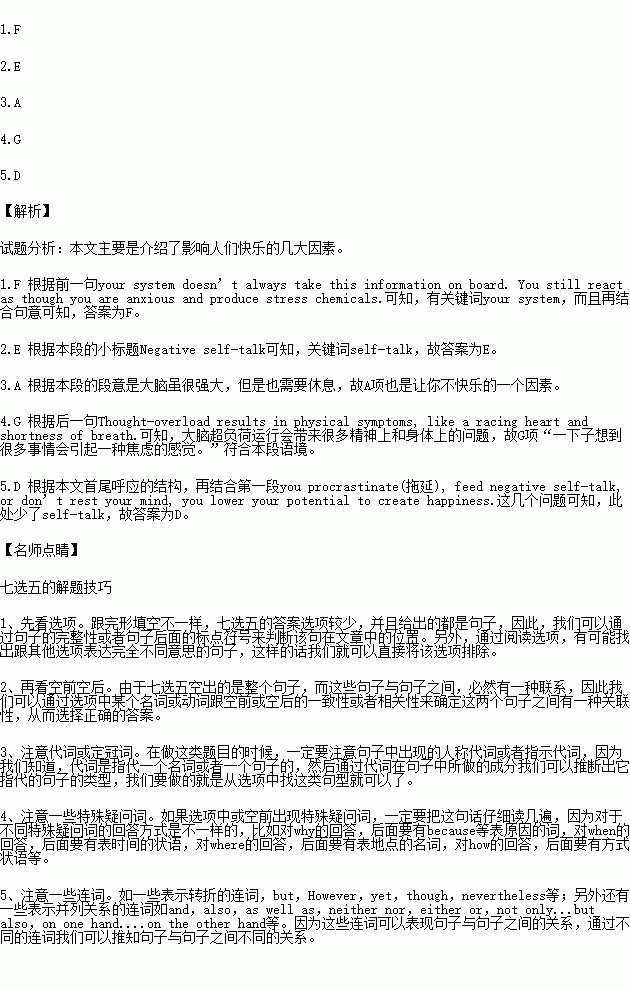题目内容
根据短文内容,从短文后的选项中选出能填入空白处的最佳选项,选项中有两项为多余选项。
You want to be happy, who doesn’t? However, whether you procrastinate(拖延), feed negative self-talk, or don’t rest your mind, you lower your potential to create happiness.
Procrastination
You aren’t in deadly danger if you procrastinate, but your system doesn’t always take this information on board. You still react as though you are anxious and produce stress chemicals.
1. Your ability to see the big picture of life is reduced when you procrastinate. Therefore, you don’t see as much joy.
Negative self-talk
2. Taking notice of what goes on in your head and putting positive change in action makes negative self-talk useful. Nevertheless, most people don’t recognize negative self-talk as a pointer; they feed it until it grows out of control.
3.
Your mind contains an incredible amount of information and is more powerful than any computer many times over. However, if you give it too many tasks, you shut out peace of mind.
4. Thought-overload results in physical symptoms, like a racing heart and shortness of breath. Additionally, you might have sleeplessness, digestive problems and other symptoms of stress that reduce your happiness.
If you want to increase the odds of being happy, don’t procrastinate. 5. Similarly, don’t overload your mind, give it a rest and you will soon notice you are happier.
A. Not resting your mind.
B. Using your brain regularly.
C. It is a human weakness to put things off.
D. At the same time, don’t feed negative self-talk.
E. Self-talk can tell you how healthy you are emotionally.
F. Additionally, as your system is nervous physically, your mind also closes off a little.
G. Thinking about many things at once leads to a feeling of anxiety.


